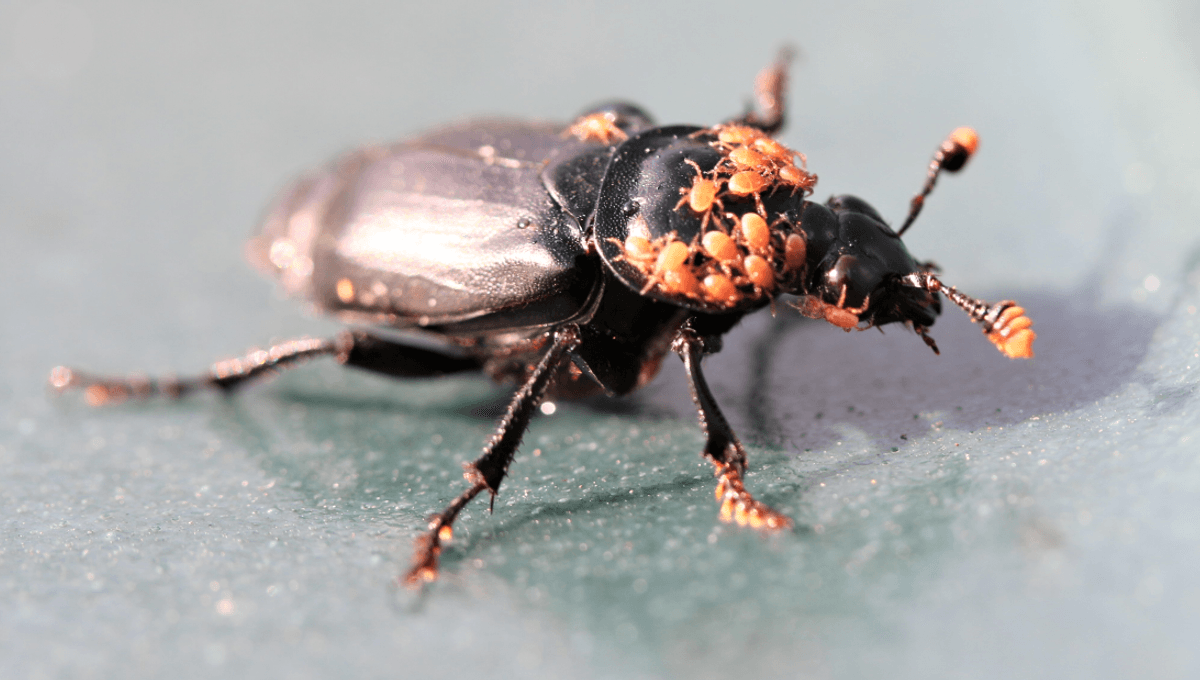
You see a beetle covered in bugs. Poor thing, must be parasitized, right? Well, not necessarily. You see, a lot of animals are partial to hitchhiking in a kind of commensal interaction between species in which one animal clambers onto another so that it can benefit from being carried around. It’s called phoresy, and it’s really quite remarkable.
There was a recent and amazing tale of an octopus that was spotted riding on the back of a shortfin mako shark. A particularly badass way to get around when you consider they are the fastest in the ocean, meaning that octopus may have been in for a wild ride of up to 50 kilometers (31 miles) per hour.
Whether this incredible sighting constitutes phoresy comes down to how it began, because phoresy is defined as an interaction in which the rider (aka, phoront) obtains a fitness benefit, while the ridee doesn’t gain anything, but doesn’t lose anything either. If our octopus was trying to evade predation when it slipped onto the shark’s head, the shark was losing out so that isn’t quite phoresy. If it just fancied a speedier commute home, it may well have been.
Phoresy more typically refers to smaller animals being ridden by animals much smaller than them. It’s a big hit among the insects, but is seen across the entire animal kingdom in a diverse range of interactions.
“African black fly larvae obtain dispersal through crabs, some beetles are phoretic on bees, nematodes are hitchhikers on flies and slugs, and ostracod crustaceans have been found to hitch rides on lizards and frogs,” explained P. Signe White et al in a 2017 paper. “There is also variation in the number of phoronts per host: single beetles hitch rides on bees, but hundreds of mites can assemble on flies.”
Hitching a lift has been around for a long time, too, with fossilized evidence revealing phoresy in 49-million-year-old spiders, and 320-million-year-old insects. That it’s found across such a vast variety of animals demonstrates its deep evolutionary history, and that it’s a very effective method of getting around.
A journey that might typically take a mite days or weeks could be achieved much faster on the back of a leggy beetle, and phoresy can even be the difference between life and death. Many phoronts live in habitats that won’t last, like carrion and manure, and so their life depends on hitching a ride out of there on something else.
Phoresy can also contribute to gene flow, as individuals from separate populations that would otherwise have never met get to hook up. This reduces pressure from inbreeding depression and the risk that deleterious mutations might arise, thanks to the influx of genetic diversity.
That said, it may have its downsides for the usually unaffected host as whilst phoresy isn’t parasitism, it can lead to parasitism. And if you’re not sure why that’s such a lousy deal, just ask these poor, worm-exploding spiders.
Source Link: What Is Phoresy? When Animals Hitch A Ride On Other Animals